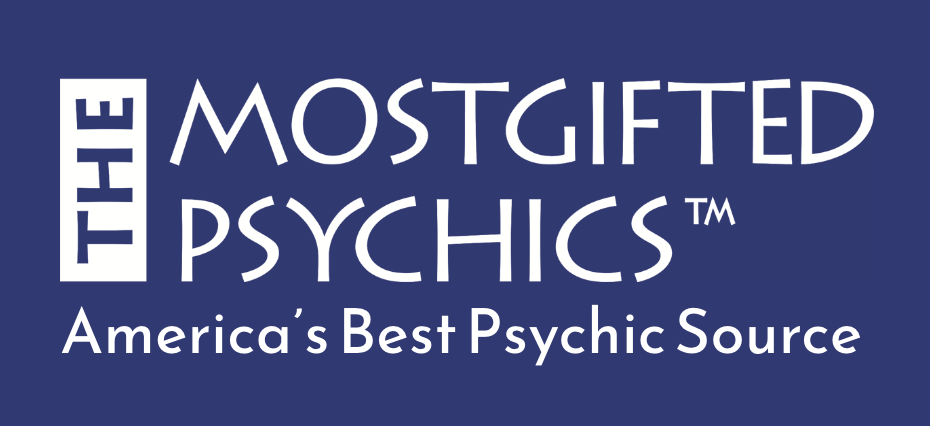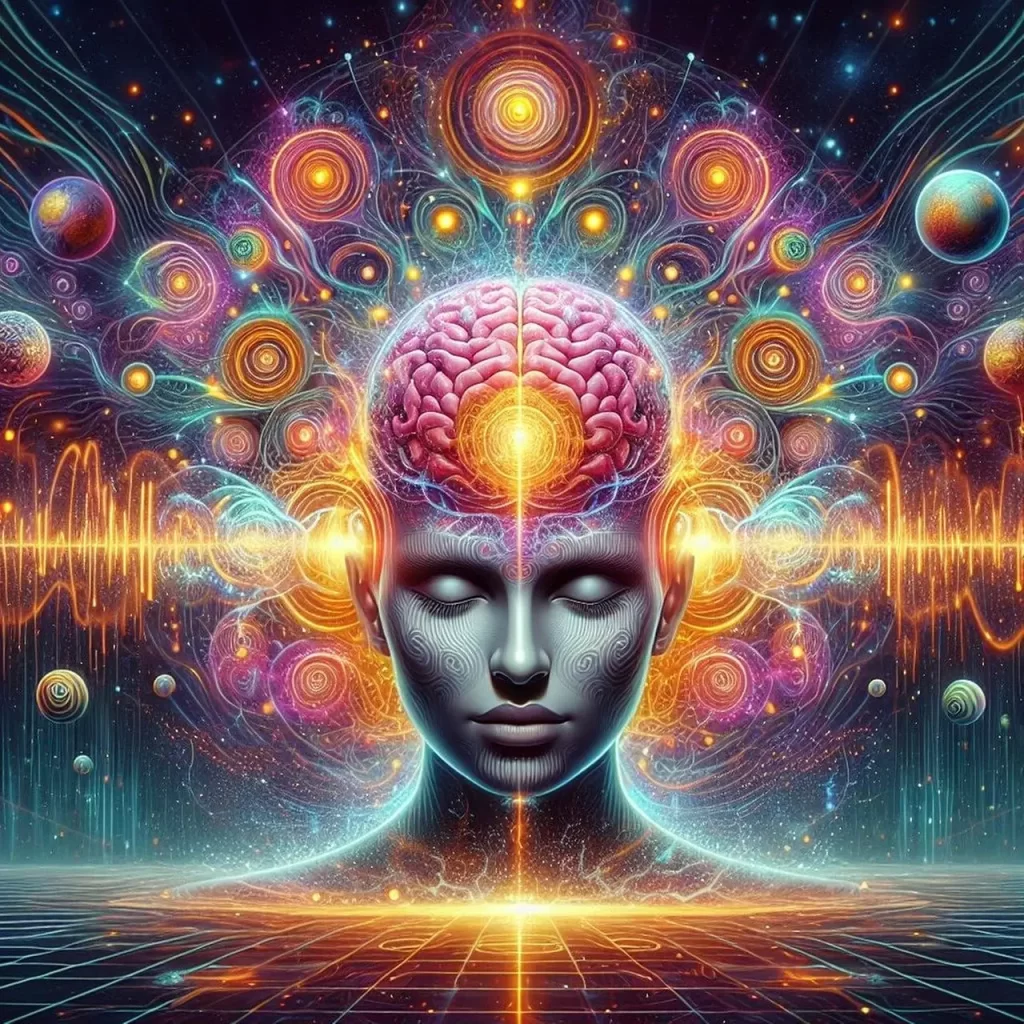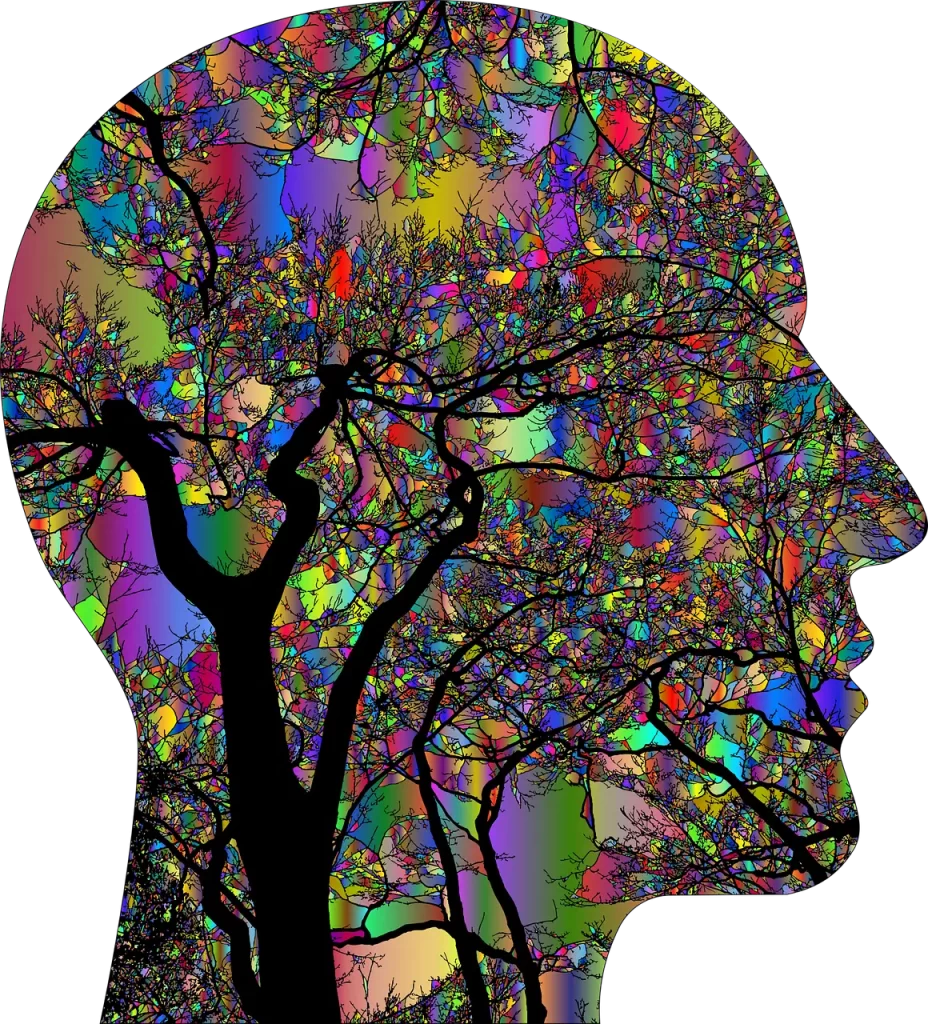 Harnessing Nature’s Profound Compounds for Mental Wellbeing
Harnessing Nature’s Profound Compounds for Mental Wellbeing
In the ever-evolving landscape of mental health treatments, a once-stigmatized realm is experiencing a profound resurgence – the therapeutic application of psychedelic substances. These potent, naturally occurring compounds, long shrouded in controversy, are now shedding light on uncharted territories of the human psyche, offering hope to those grappling with the depths of psychological distress.
From the mystical realms of ancient civilizations to the cutting-edge laboratories of modern science, psychedelics have captivated the human imagination, igniting both curiosity and skepticism. Yet, as scientific inquiry delves deeper into their mechanisms and potential, a paradigm shift is unfolding, one that challenges conventional wisdom and beckons us to embrace a more holistic understanding of the mind-body connection.
In this comprehensive exploration, we embark on a journey through the intricate tapestry of psychedelic healing, unraveling the threads that intertwine neuroscience, psychology, and spirituality. We will uncover the theories that underpin their profound effects, the therapeutic applications that are redefining mental healthcare, and the potential they hold for unlocking the secrets of consciousness itself.
The Enigmatic Realm of Psychedelic Compounds
Psychedelic substances, often derived from nature’s bountiful offerings, possess the remarkable ability to induce profound alterations in human consciousness. These compounds, which include psilocybin from “magic” mushrooms, lysergic acid diethylamide (LSD), and mescaline from the peyote cactus, have been revered for centuries by various cultures for their mind-altering properties.
While their precise mechanisms of action remain shrouded in mystery, these substances are believed to interact with specific neurotransmitter systems in the brain, particularly the serotonergic system. By binding to serotonin receptors, psychedelics initiate a cascade of neurochemical events that profoundly impact perception, cognition, and emotional processing.
The Serotonergic Connection
One of the primary targets of psychedelic compounds is the serotonin 2A (5-HT2A) receptor, a crucial component of the serotonergic system. This receptor plays a pivotal role in regulating various brain functions, including mood, perception, and consciousness. By activating the 5-HT2A receptor, psychedelics are thought to induce a temporary disruption in the brain’s default mode network (DMN), an interconnected set of brain regions responsible for self-referential processing and introspection.
This disruption is hypothesized to facilitate a temporary dissolution of the ego, a phenomenon often described as “ego death” or “ego dissolution.” This experience is believed to be a key factor in the therapeutic potential of psychedelics, as it may allow individuals to gain a fresh perspective on their thoughts, emotions, and behaviors, ultimately promoting psychological flexibility and personal growth.
Unveiling the Neural Underpinnings: Theories of Psychedelic Action
As scientific exploration into the realm of psychedelics continues to unfold, several theories have emerged to explain their profound impact on the brain and consciousness. These theories, while still evolving, provide valuable insights into the intricate mechanisms underlying the psychedelic experience.
The Entropic Brain Hypothesis
One prominent theory, known as the “entropic brain hypothesis,” proposes that psychedelics increase the entropy, or disorder, within the brain’s neural networks. This increased entropy is thought to disrupt the brain’s default mode of operation, allowing for a more unconstrained flow of information and a heightened state of consciousness.
According to this hypothesis, the brain typically operates within a limited range of neural configurations, constraining the flow of information and maintaining a stable sense of self and reality. However, when psychedelics are introduced, they disrupt these constraints, leading to a more chaotic and unpredictable neural activity pattern. This increased entropy is believed to facilitate the emergence of novel thought patterns, enhanced creativity, and a heightened sense of interconnectedness with the surrounding environment.
The Integrated Information Theory
Another intriguing theory, the “integrated information theory,” suggests that consciousness emerges from the integration of information within the brain’s neural networks. This theory proposes that psychedelics increase the complexity and integration of information processing, leading to a heightened state of consciousness characterized by vivid sensory experiences, altered perceptions of time and space, and a sense of profound interconnectedness.
According to this theory, the brain typically operates within a limited range of integrated information, constraining the richness and depth of conscious experience. However, when psychedelics are introduced, they facilitate the integration of information across diverse neural networks, allowing for a more unified and holistic experience of consciousness.
The Predictive Processing Framework
The “predictive processing framework” offers a unique perspective on the mechanisms underlying psychedelic experiences. This theory posits that the brain continuously generates predictions about the sensory inputs it receives, based on prior experiences and learned patterns. These predictions are then compared to the actual sensory inputs, and any discrepancies are used to update the brain’s internal models of the world.
Psychedelics are thought to disrupt this predictive processing system, leading to a mismatch between the brain’s predictions and the incoming sensory information. This mismatch is believed to contribute to the perceptual distortions, altered sense of self, and heightened emotional experiences associated with psychedelic states. By challenging the brain’s established models of reality, psychedelics may facilitate a re-evaluation of deeply ingrained beliefs and patterns, potentially promoting psychological flexibility and personal growth.
The Theta Wave Connection: Unveiling the Rhythms of Consciousness
In the quest to unravel the mysteries of psychedelic experiences, researchers have turned their attention to a particular type of brain wave pattern known as theta waves. These low-frequency oscillations, ranging from 4 to 8 Hertz (Hz), have been linked to various cognitive and emotional processes, including memory formation, emotional regulation, and even spiritual experiences.
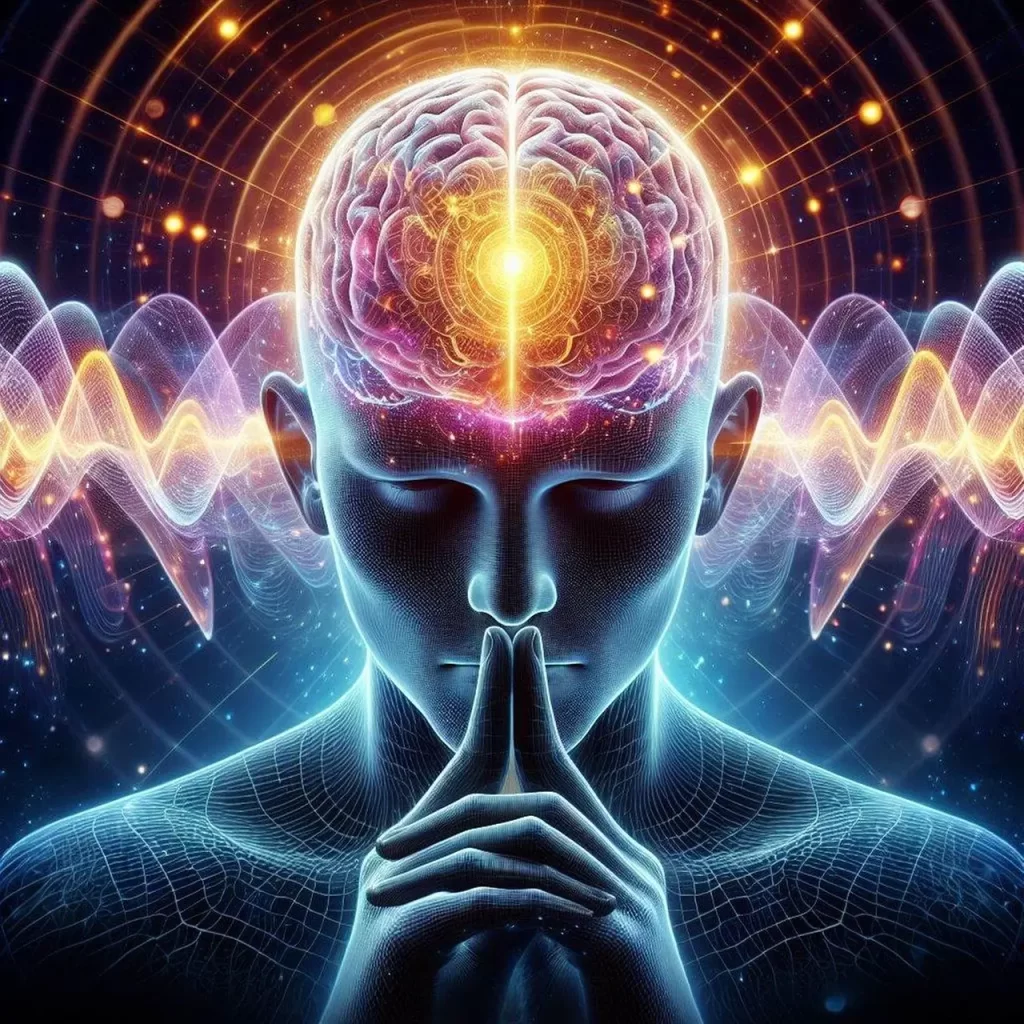 The Significance of Theta Waves
The Significance of Theta Waves
Theta waves are typically observed during light sleep, meditation, and states of deep relaxation. However, they have also been found to play a crucial role in the processing and integration of information, as well as the formation of new memories. This connection between theta waves and cognitive processes has led researchers to speculate about their potential involvement in the profound experiences induced by psychedelic substances.
Interestingly, studies have shown that psychedelics can increase the power and synchronization of theta waves in the brain. This heightened theta activity has been associated with the subjective experiences reported during psychedelic states, such as enhanced creativity, altered perception of time and space, and a sense of interconnectedness with the surrounding environment.
The Resonance of 4 Hz
Within the theta wave range, a particular frequency of 4 Hz has garnered significant attention from researchers. This specific frequency has been linked to various cognitive and emotional processes, including memory consolidation, emotional regulation, and even spiritual experiences.
Some theories suggest that psychedelics may enhance the brain’s ability to resonate at this 4 Hz frequency, facilitating the integration of information across diverse neural networks and promoting a heightened state of consciousness. This resonance may contribute to the profound insights, emotional breakthroughs, and personal transformations often reported during psychedelic experiences.
Psychedelic-Assisted Therapy: Embracing a Paradigm Shift
As the scientific understanding of psychedelic compounds deepens, a paradigm shift is emerging in the field of mental health treatment. Psychedelic-assisted therapy, once considered a fringe and controversial practice, is gaining momentum as a promising approach to addressing a wide range of psychological and emotional challenges.
The Therapeutic Potential of Psychedelics
Preliminary research has highlighted the potential benefits of psychedelic-assisted therapy in treating various conditions, including:
- Depression and Anxiety: Studies have shown that psychedelics, such as psilocybin and LSD, can alleviate symptoms of depression and anxiety, particularly in cases where traditional treatments have been ineffective.
- Post-Traumatic Stress Disorder (PTSD): Psychedelics like MDMA (3,4-methylenedioxymethamphetamine) have demonstrated promising results in facilitating the processing of traumatic memories and reducing the severity of PTSD symptoms.
- Addiction: Substances like psilocybin and ibogaine have been explored as potential aids in overcoming addictions to substances like alcohol, nicotine, and opioids, by promoting psychological insights and facilitating behavior change.
- Eating Disorders: Psychedelic experiences have been reported to positively influence body image and promote healthier attitudes towards food and self-perception, potentially alleviating symptoms of eating disorders.
The Therapeutic Approach
Psychedelic-assisted therapy typically involves a combination of traditional psychotherapy techniques and the controlled administration of psychedelic substances. The therapeutic process is carefully designed to provide a safe and supportive environment for individuals to explore their inner experiences, process emotional traumas, and gain new perspectives on their challenges.
During the psychedelic experience, trained therapists or guides facilitate the journey, offering emotional support and guidance as needed. This approach aims to harness the profound insights and emotional breakthroughs that can arise during the psychedelic state, while integrating them into a broader therapeutic framework for lasting personal growth and transformation.
Embracing the Mystical: Psychedelics and Transcendent Experiences
One of the most intriguing aspects of psychedelic experiences is their potential to induce profound states of consciousness often described as “mystical” or “transcendent.” These experiences are characterized by a sense of interconnectedness with all things, a dissolution of the ego, and a profound sense of awe and reverence.
The Noetic Quality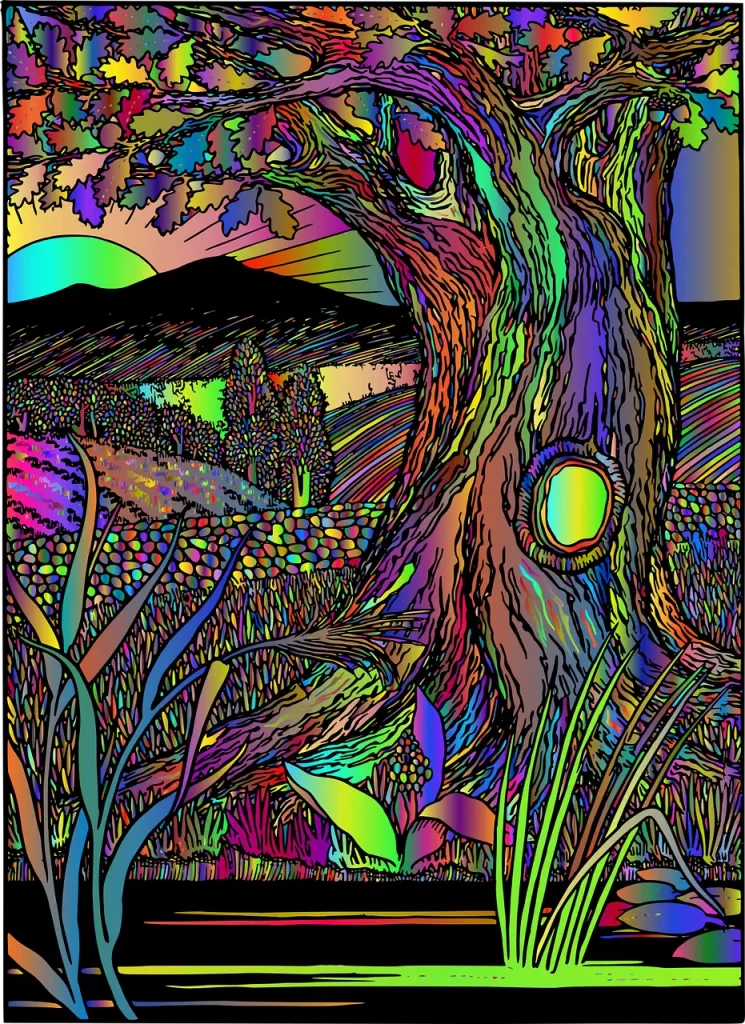
Psychedelic experiences are often imbued with a quality known as “noetic,” which refers to a sense of profound insight or direct knowledge that transcends ordinary cognitive processes. This noetic quality has been reported by individuals from diverse cultural and religious backgrounds, suggesting a universal aspect to these experiences.
Many individuals who have undergone psychedelic experiences describe a heightened sense of understanding and a deeper appreciation for the interconnectedness of all life. These insights can profoundly impact one’s worldview, fostering a greater sense of compassion, empathy, and reverence for the natural world.
Spiritual Implications
The mystical and transcendent aspects of psychedelic experiences have led some researchers and philosophers to explore their potential implications for understanding the nature of consciousness and the human spiritual experience. While the scientific study of these phenomena remains in its infancy, some theories suggest that psychedelics may provide a glimpse into the deeper layers of consciousness, potentially offering insights into the fundamental nature of reality itself.
However, it is important to approach these spiritual implications with an open yet critical mindset, recognizing the inherent limitations of our current scientific understanding and the subjective nature of these experiences. Ultimately, the integration of psychedelic insights into existing spiritual and philosophical frameworks remains a personal and deeply individual journey.
The Therapeutic Renaissance: Navigating the Ethical Landscape
As the therapeutic potential of psychedelics continues to unfold, it is crucial to navigate the ethical and legal considerations surrounding their use. While the decriminalization and legalization of certain psychedelic substances are gaining traction in some jurisdictions, their legal status remains a complex and evolving landscape.
Ethical Considerations
The responsible and ethical use of psychedelics in a therapeutic context requires a multifaceted approach that prioritizes safety, informed consent, and responsible research practices. Key ethical considerations include:
- Participant Screening and Support: Rigorous screening processes should be in place to ensure the safety and suitability of participants for psychedelic-assisted therapy, taking into account factors such as mental health history, personal motivations, and support systems.
- Informed Consent and Preparation: Participants should be thoroughly informed about the potential risks, benefits, and expectations of psychedelic-assisted therapy, allowing them to make fully informed decisions about their participation.
- Trained Professionals and Safe Settings: Psychedelic-assisted therapy should be conducted under the guidance of trained professionals in controlled and safe environments, minimizing the potential for adverse events or misuse.
- Integration and Follow-up: Adequate support and follow-up should be provided to participants to facilitate the integration of their experiences into their daily lives and to address any potential challenges or concerns that may arise.
Legal and Regulatory Considerations
The legal status of psychedelic substances varies widely across different jurisdictions, with some substances being strictly prohibited while others are undergoing regulatory changes or decriminalization efforts. It is crucial for individuals and researchers to stay informed about the latest legal developments and to operate within the boundaries of the law.
Additionally, responsible research practices and adherence to ethical guidelines are essential for advancing the scientific understanding of psychedelics while maintaining public trust and ensuring the safety of participants. Collaboration between researchers, policymakers, and regulatory bodies is key to navigating this complex landscape and fostering a responsible and ethical approach to psychedelic-assisted therapy.
Conclusion: Embracing the Psychedelic Renaissance
As we stand at the precipice of a psychedelic renaissance, it is evident that these profound compounds hold immense potential for transforming our understanding of the human mind and consciousness. While the scientific exploration of psychedelics is still in its infancy, the emerging theories and therapeutic applications offer a glimpse into a future where mental health treatment may transcend the boundaries of conventional approaches.
By harnessing the power of these natural substances and integrating them into a responsible and ethical framework, we may unlock new avenues for healing, personal growth, and a deeper understanding of the human experience. As we navigate this uncharted territory, it is essential to embrace a spirit of open-mindedness, scientific rigor, and compassion, recognizing that the journey towards psychedelic healing is one that requires a delicate balance between scientific inquiry and profound reverence for the mysteries of consciousness.
Ultimately, the psychedelic renaissance represents a paradigm shift, a call to embrace the depths of human potential and to explore the boundless realms of the mind with humility, curiosity, and a commitment to the betterment of humanity. As we embark on this transformative journey, let us embrace the wisdom of ancient traditions while harnessing the power of modern science, forging a path towards a more holistic and compassionate approach to mental wellbeing.
What do you think of Psychedelics and their potential to heal? Do you have a story you’d like to share or a comment? Please feel free to register and comment below, we’d love to hear from you.
